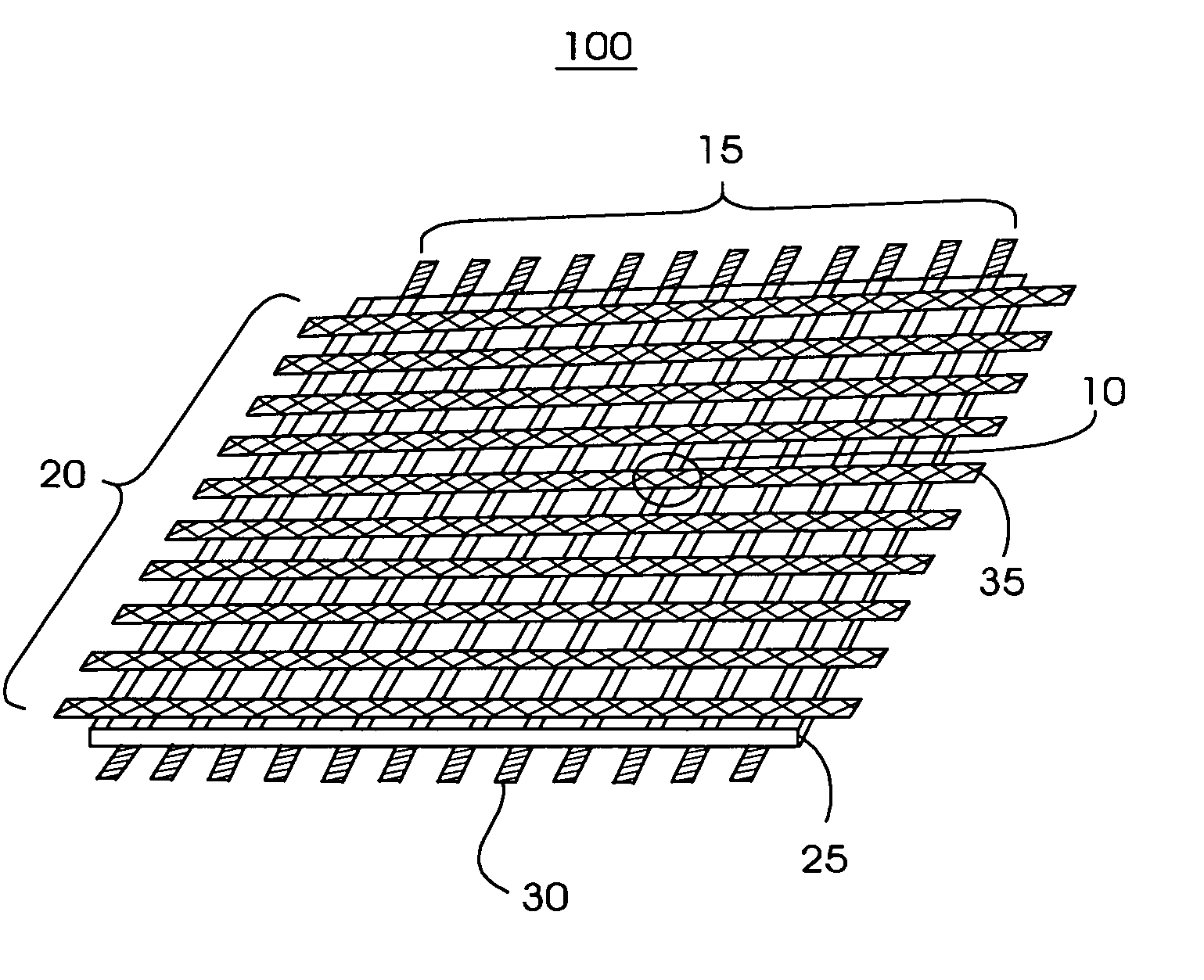Memory device and method of making the same
a memory device and memory technology, applied in the field of memory and storage systems, can solve the problems of inability to adapt to the changing needs of the user, and the inability to use the device at all, so as to achieve high and low resistance levels of the memory element, easy adjustment, and high and low resistance level of the memory element
- Summary
- Abstract
- Description
- Claims
- Application Information
AI Technical Summary
Benefits of technology
Problems solved by technology
Method used
Image
Examples
Embodiment Construction
[0039]FIG. 1 illustrates an exemplary high-level architecture of a crosspoint memory array (or system) 100 comprised of a plurality of multi-stable devices 10 may be used. When used as a memory device, the multi-stable device 10 performs at one of two different electrical resistance values, an “on” value or an “off” value, that can be externally set by applying a voltage pulse to the multi-stable device 10. The “on” value may, for example, represent a “1” bit while the “off” value may represents a “0” bit of data. The resistance of the multi-stable device 10 can be read by applying a lower voltage to the multi-stable device 10; the “read” voltage does not affect the state of the multi-stable device 10.
[0040] The crosspoint memory array 100 is formed of an array of electrodes 15 and electrodes 20 that are disposed perpendicularly relative to each other. Electrodes 15 and electrodes 20 may also be disposed at any other relative angular orientations, such that electrodes 15, 20 inters...
PUM
 Login to View More
Login to View More Abstract
Description
Claims
Application Information
 Login to View More
Login to View More - R&D
- Intellectual Property
- Life Sciences
- Materials
- Tech Scout
- Unparalleled Data Quality
- Higher Quality Content
- 60% Fewer Hallucinations
Browse by: Latest US Patents, China's latest patents, Technical Efficacy Thesaurus, Application Domain, Technology Topic, Popular Technical Reports.
© 2025 PatSnap. All rights reserved.Legal|Privacy policy|Modern Slavery Act Transparency Statement|Sitemap|About US| Contact US: help@patsnap.com



